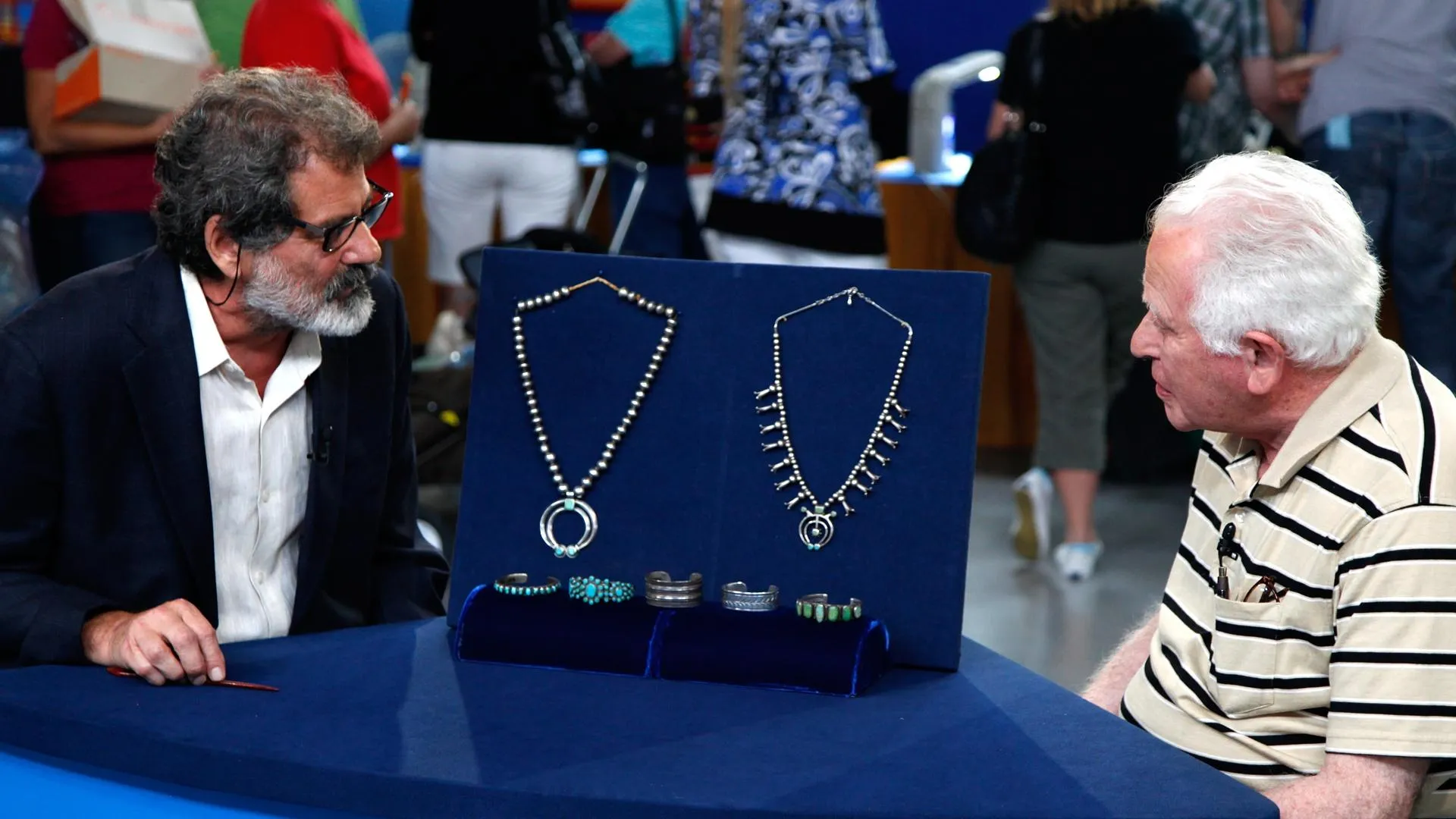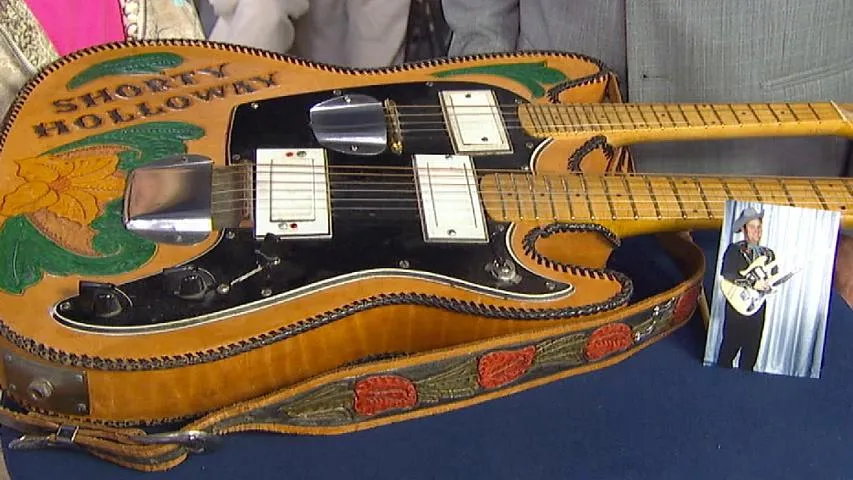GUEST: It was my husband's, and a very good friend made it for him. The top part is a mandolin, and the bottom is a guitar. And so it's been in the family since 1950, around in there.
APPRAISER: So your husband was Shorty Holloway?
GUEST: Yeah, that's right. He was a little guy, so that was his band name.
APPRAISER: Well, it's a doubleneck electric guitar with a four-string mandolin. The original mandolin, each of these strings is doubled, but they found that when they were using an electric pickup that it was both easier to play and a lot easier to tune if they just used a single string. And it's similar to ones that were first made by Paul Bigsby around this same time, late 1940s. And Paul Bigsby knew people in the Northwest and helped them make instruments. It bears such a close resemblance to what Paul Bigsby did that there's a good chance that he helped inspire other builders in this area. And obviously the advantage was that it made him a much more versatile musician, and it meant that a three-piece band could sound more like a four-piece band. Similar leather covers were used on a lot of guitars around that time. I'm going to show what the back is like. It's one of the best hand-tooled leather covers that I've seen in terms of the creativity and color, and it was very difficult to make because they had to stitch it all around both of these necks. Hand-made instruments are difficult to sell, even when they're really well-done like this. But because it is a professional effort, I would say that in a specialty shop, my guess would be in the $2,500 to perhaps $3,500 range.
GUEST: That's great.









